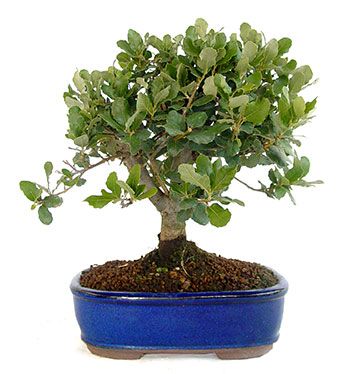Characteristics
They are trees and shrubs of evergreen as well as deciduous leaves. Leaves have a leathery texture, and can be very different between species or even within the same tree. Male flowers present themselves in aments (hanging flower clusters), and female flowers in shanks. The bark tends to be smooth in the young stages of the tree but becomes rougher and broken when the tree has matured.
“Quercus suber” variety is commonly called cork oak and is the primary source of cork. The fruit of the oak is the acorn.
Location
It can be placed outdoors in direct sunlight. It is very resilient to cold weather in winter but it should be kept away from freezing conditions to protect its roots.
Watering
In moderation. In natural conditions it can survive with very little water as its roots are very efficient.
Fertilization
Spring and autumn. In summer it is best to reduce the dosage as it could cause excessive leaf growth. In winter you can stop altogether as it only has minimum growth.
Re-potting
Every 2-3 years, at the end of the winter
Substrate
100% Akadama or mixed with 30% of volcanic clay. It can also be mixed with peat. Type of soil is flexible in this species.
Pruning and pinching
Pruning
Structural pruning can be carried out in winter.
Pinching
Once the leaves are fully grown cut a few back and leave 2 new pairs to maintain the structure.
Wiring
spring- summer
Curiosities
Oak wood is highly used to make barrels to produce wine

